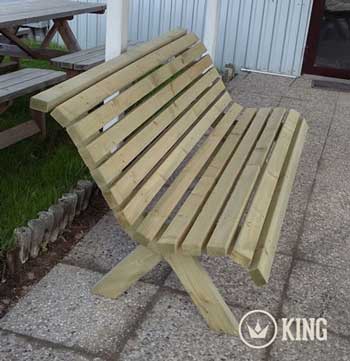
Every garden might use a few more locations to sit. Maybe you have a remote nook that could gain from a simple perch for visitors to rest on, or perhaps your neighborhood barbecues have actually outgrown your outdoor patio set. In either case, a simple homemade garden bench is a fitting option.
This classic little 4-foot-long bench is affordable and easy to build with just a couple of basic tools. It costs less than $30 in products and will take about an hour to construct. And I believe that when you see the result, you'll desire to make half a lots more.
For the tapered ends of the face boards, use a speed square to mark off 45-degree triangles on each end of the 1x6s. To make the cutouts in the legs, mark a triangle in the center of the bottom edge of each 2 × 12. Utilizing the speed square as a guide, cut out the triangles (picture); if you're utilizing a circular saw, you'll need to complete cutting the leg notches with a handsaw.
2|Connect the fastening bars
On one side of each leg, position an attaching bar flush with the top of the board, and attach it with two 2 1/2- inch-long screws, approximately 1 1/2 inches from each end.
3|Area the legs, and connect the face boards
Rest both leg boards on their sides on a flat work surface, with the securing bars dealing with each other. Location a face board on the side of the legs, and change the leg spacing so that the shorter edge of the face board is flush with the beyond each leg. Attach the face board to the legs with 1 3/4- inch-long screws. Turn the legs over, and attach the 2nd face board in the same style.
4|Position the seat and legs
Place the 2x8s side by side on your work surface area, and utilize the edge of the speed square to develop a space between the boards. Make certain completions of the boards line up completely. Lay the leg assembly on the seat boards, upside down, and center it.
5|Secure the legs to the seat
Connect the leg assembly to the seat boards by screwing through the attaching bars to the seat boards with four 2 1/2- inch-long screws on each side.
6|Dress it up
I selected a semitransparent, weatherproofing, Bordeaux-colored stain to develop a pop of color in my garden. You might utilize any color you like, or let the bench weather condition naturally.
Make it last
You should get years of use out of this bench without much hassle. But like all wooden outdoor furnishings, it will not last permanently; the wood will ultimately degrade. Wood's worst opponent is wetness, and the bench is most susceptible where the legs can Bloembak be found in contact with the wet ground. To make the bench last longer, just position a small paver under each of the legs.